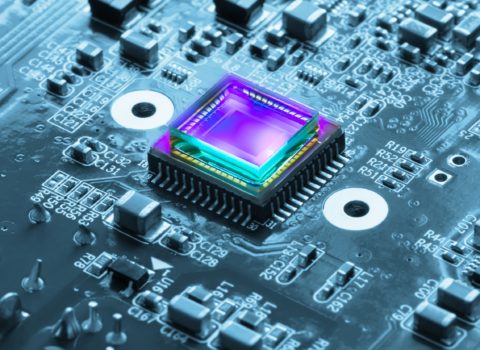
Micro and Nanotechnologies as pillars of 6G and Future Networks
Looking at 2030 and ahead, future generations of telecommunications and distributed services will be demanding for miniaturized hardware components conceptually closer to software.
If we look at the way telecommunications evolved in the last decade, unprecedented acceleration in innovation and disruption is recognizable. On one side, mobile services were restricted to voice calls and short messaging for more than twenty years, from 1G (1st generation), at the crossing of the 1970s and 1980s, until the transition to 3G (3rd generation), in the first years of the 2000s. Then, after 2010, we started accessing Internet-based services on the move (e.g., video streaming, social media, etc.), with Key Performance Indicators (KPI), like speed, bandwidth and reliability, significantly improved under the umbrella of 4G-LTE (4th generation; Long Term Evolution).
In the seamless handover across 4G and 5G (5th generation) – the latter currently being unrolled – KPI are further rising, e.g., aiming at the 1 Gbps average data rate per user. Beside increase of performance, 5G will introduce unprecedented concepts, like network virtualization and integration of Machine-Type Communications (MTC) within a unique network.
Setting the gaze further ahead, 6G (6th generation) will take over starting from 2030. The forecasted increase of KPI is expected to score 100 to 1000 times more than what 5G will achieve in the next few years, with data rate per user breaking the Tbps barrier, and End-To-End (E2E) latency below 1 ms. Also, 6G will convey most part of the massive amounts of data generated by application paradigms like the Internet of Everything (IoE) and the Tactile Internet (TI).
Although it may look odd, this is just part of the novelty that 6G will bring; not even the most disruptive. In fact, Artificial Intelligence (AI) will be massively employed in 6G, not only to improve the Quality of Services (QoS) offered to end users, but also in a new way, to enhance network operation. In different terms, the Software (SW), along with the physical Hardware (HW) infrastructure, will jointly implement never seen before features, like self-rection to real-time constraints (resilience), self-management and self-evolution of implemented services and functionalities, heading towards the ground-breaking concept of a network of networks.
Putting all these elements together, it is straightforward that meeting the challenge will demand for uncommon efforts at technology, design and development level. To this end, Jacopo Iannacci, with the MicroSystems Technology (MST) Research Unit of the Center for Sensors and Devices (SD) at Fondazione Bruno Kessler (FBK), authored a work entitled “A Perspective Vision of Micro/Nano Systems and Technologies as Enablers of 6G, Super-IoT, and Tactile Internet”. The article is published on the January 2023 issue of the Proceedings of the IEEE, and reports a detailed study of the latter aspects [OPENACCESS LINK BELOW].
The main statement supported by the work is that disruption of 6G and, on a longer time basis, of Future Networks (FN), cannot be fully addressed simply relying on the classical HW-SW systems’ co-design approaches, despite well-established in several decades of technology evolution, and still in use today.
Given such limitations, the contribution proposes unprecedented bottom-up approaches to conceiving, designing and developing HW-SW systems, starting from low-complexity miniaturized physical devices, like sensors, actuators and transducers, and focusing on the network edge.
The cornerstone is the reformulation of the classical concept of Hardware (HW), which is expected to embody more intelligent and self-management capacities, turning closer to Software (SW) from a conceptual perspective. Then, capitalizing on the SW-like improved HW, the classical HW-SW co-design approaches will be surpassed, leading to an increase of separation and symmetry between them. More insight on the latter concepts is available in the article (fully available online), and not further detailed here for the sake of brevity.
The new generation of HW-SW systems will be more flexible and adaptable, able to self-aggregate SW and HW modules in a real-time fashion, realizing functions not necessarily scheduled and planned ab-initio, leading to self-evolution of small portions of the infrastructure edge, yet, maintaining high-degree of orchestration with the rest of the network to operate as a whole.
Turning this vision into reality will urge for significant innovation at HW technologies level. In the work, Microtechnologies and Nanotechnologies are forecasted to be pivotal to the target of the 6G/FN network of networks, including micro/nano sensors and actuators, systems/devices (MEMS/NEMS), as well as innovative nanostructured materials.
Just to mention a few examples of micro/nano solutions, among those reviewed in the article, it is worth mentioning highly-integrated smart multi-functional sensors and actuators, energy harvesters able to convert electric power from environmental sources, as well as frequency-agile widely reconfigurable MEMS for Radio Frequency (RF) passive components, known as RF-MEMS.
In conclusion, it is worth mentioning that a few among the pivotal HW-based research lines described in the article, are investigated at FBK. In particular, the MST Unit has been developing since more than 15 years high-performance and widely reconfigurable RF-MEMS components of various complexity, relying on the in-house micro/nano fabrication laboratories. Moreover, the MST Unit also investigated MEMS-based miniaturized energy harvesters, able to convert part of the mechanical energy scattered in the environment as vibrations, into electricity. Such components will be crucial to empower the scattering of intelligence to the edge in the scenarios of 6G and FN, as forecasted by the article discussed above.



